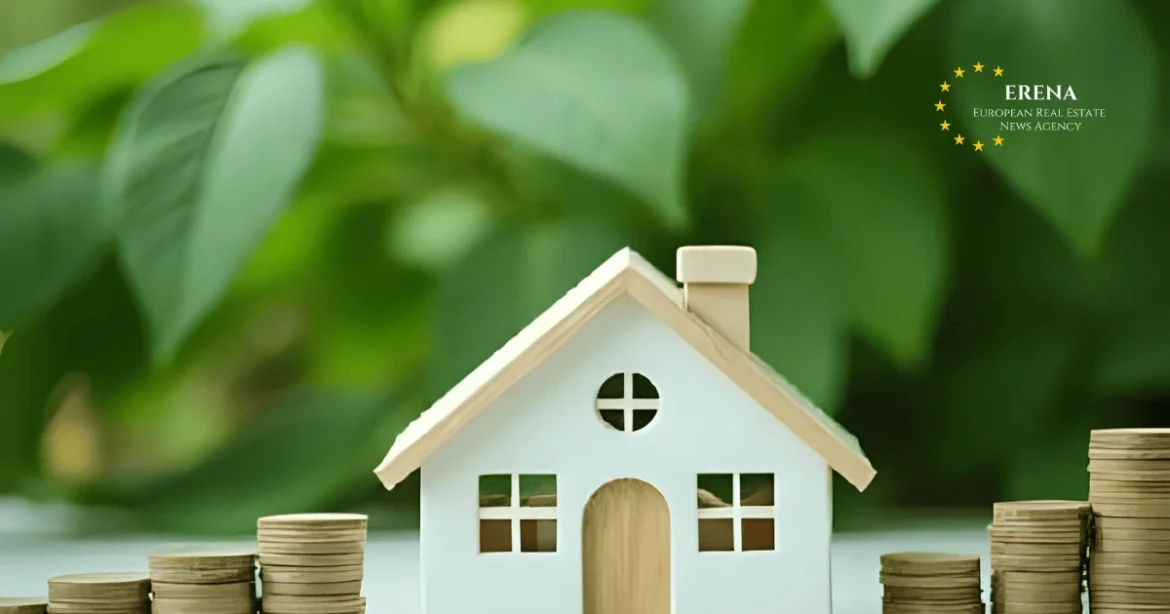In 2025, the European mortgage market is undergoing a decisive shift. Lenders are no longer content to reward homes that simply carry a good energy label at the point of sale. Instead, they are directing incentives toward verified retrofits—discounts, cashbacks, and cheaper credit now depend on proving measurable upgrades. The move reflects both regulatory pressure and growing recognition that sustainable housing lowers financial risk for banks.
Banks Tie Discounts to Proof
In the Netherlands, ING now adjusts mortgage rates the month after a borrower registers a better energy label. This means an owner who invests in insulation or a heat pump and upgrades from label D to B sees the rate cut automatically once the new certificate is filed. “Customers should not only live energy-efficiently, but also future-proof their homes,” explained Folkert van der Ploeg, ING’s housing director.
ABN AMRO follows a similar approach with its Sustainability Discount, shaving 0.10–0.35 percentage points off mortgage rates for homes with labels A to A++++. Borrowers who upgrade can still unlock the discount if they prove improvements within two years.
In Spain, CaixaBank’s “Hipoteca Eficiente” allows buyers to finance retrofit costs inside the mortgage itself, provided the works measurably improve efficiency.
UK Turns to Cashback and Affordability
In Britain, lenders are experimenting with direct cash rewards. Virgin Money offers €3,500–€17,500 cashback for retrofits such as heat pumps, solar panels, and insulation, depending on loan size and term. “The crucial difference is giving a ‘what next’ option for consumers,” said Richard Merrett, chair of the Green Mortgage Advice Initiative. Virgin Money’s Craig Calder described it as removing “a significant financial obstacle.”
Meanwhile, Halifax now factors a property’s energy rating into mortgage affordability. From December 2024, it increases the maximum loan for A–B rated homes while tightening limits on F–G homes. For buyers, this means energy bills directly influence how much they can borrow.
France, Ireland, Germany: Incentives with Conditions
France’s éco-PTZ offers up to €50,000 in zero-interest loans for deep retrofits, provided invoices are submitted within three years and, in some cases, an energy audit proves a two-class upgrade.
Ireland’s Home Energy Upgrade Loan, backed by the state energy authority, provides low-rate finance around 3% APR, with eligibility tied to verified retrofit projects.
In Germany, the KfW Kredit 261 programme lends up to €150,000 per dwelling for energy upgrades. Repayment relief ranges from 5% to 45%, depending on the certified Effizienzhaus standard achieved after works.
Retrofit Costs in 2025
The new offers must be viewed against the real cost of upgrades:
- Air-source heat pump (UK): €11,600–€15,100 before grants. With the £7,500 subsidy (≈€8,700), typical outlay falls to €3,000–€6,400.
- External solid-wall insulation: around €21,000 for a standard three-bed semi.
- Internal solid-wall insulation: about €14,000.
- Cavity-wall insulation: €1,200–€5,400, saving €120–€450 per year on bills.
These figures highlight why cashback of €17,500 or interest-free loans of €50,000 are game-changers. They can cover most of a heat pump or make large-scale insulation feasible for average households.
Verification is the Key
The common thread across markets is verification:
- ING reprices once a better label is logged with the state registry.
- France demands invoices and, for major upgrades, an audit.
- Germany ties grants to certified efficiency levels.
This approach reduces risks for lenders and provides measurable results for regulators and investors. The Energy Efficient Mortgage Label (EEML) is helping standardise reporting across Europe, ensuring green mortgage portfolios are credible.
Expert and Industry Reactions
Folkert van der Ploeg of ING stresses the need to “future-proof” homes, while Virgin Money’s Craig Calder calls cashback a tool to “dismantle a financial obstacle.” Advisors highlight that documentation is now critical: missing invoices or failing to register upgrades can mean losing thousands in benefits.
What it Means for Owners and Investors
- Prove it or lose it: Discounts and cashbacks only apply once works are verified.
- Borrowing power shifts: Efficient homes can now secure higher loan ceilings, while inefficient ones risk tighter limits.
- Stack incentives: Combining bank products with state grants maximises returns—France’s éco-PTZ or Germany’s KfW 261 often pair well with national subsidies.
Takeaway
2025 marks a turning point: green mortgages no longer reward promises but pay for proof. Verified retrofits are now the pathway to cheaper credit, stronger affordability, and higher property values. For households, this means careful planning, proper documentation, and timely upgrades. For banks, it means lower risk. And for Europe’s climate goals, it is a step toward aligning housing finance with energy efficiency.

